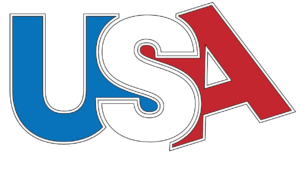I’m certainly not the first to address the abrupt changes that have taken place since Trump took office.
As much as I’d love to stay out of politics, it’s been nearly impossible with everything happening lately. While I don’t feel these changes have directly impacted my daily life—yet—I can’t help but think about how they will affect the workforce, particularly the construction and insurance restoration industries.
In theory, I like the idea behind these policies, right? We have economic powerhouses making drastic moves to curb reckless government spending. I can almost picture a room full of young, data-driven geniuses sitting behind their screens, spitting out numbers and analyzing reports that confirm what many of us have suspected for years.
Despite America’s deep political divide, one thing we can all agree on is that corruption exists in politics. The real disagreement lies in identifying where that corruption is and how it impacts the middle class—the people who wake up every morning, grind it out, and fight to maintain the life they’ve worked so hard to build.
I’ve questioned my own sanity at times, wondering why I chose a career with unlimited potential but constant uncertainty—where getting paid for work already performed can feel like a gamble. The truth is, the construction industry is no longer just for the blue-collar worker who skipped higher education. It’s evolving. The rough-around-the-edges reputation remains, but today, a successful contractor needs expertise in multiple fields. New startups bring fresh, millennial-driven marketing strategies and streamlined systems, but they also face growing pains when costly job-site mishaps occur. Meanwhile, seasoned veterans know construction inside and out but struggle to adapt to the digital era of AI, social media marketing, and paid ad campaigns.
I’d like to think I’m immune to these recent changes, but the reality is they will directly impact the backbone of America—construction and transportation.
Take tariffs, for example. Let’s start with Canada. This month, Canadian Prime Minister Justin Trudeau responded to Trump’s tariffs in a classic Canadian way—by imposing 25% counter-tariffs on $155 billion worth of American imports. Naturally, this sparked some fear, with Trudeau warning that the effects could mirror those of 2018, when significant job losses occurred in the U.S. However, he did leave the door open for negotiation.
The debate over tariffs is a heated one. Some Americans see them as a painful but necessary step—like ripping off a Band-Aid. They argue that while the short-term consequences may sting, these policies will ultimately strengthen the economy by encouraging domestic production, reducing the trade deficit, and pressuring Canada to take a tougher stance on illegal immigration.
One of the biggest concerns I keep hearing about is the rising cost of materials like steel, aluminum, and lumber—an issue that will inevitably squeeze contractors’ profit margins. On the other hand, the push for domestic production could create new opportunities in the long run.
The supply chain for these materials is extensive. Steel and aluminum don’t just appear at job sites; they start as raw materials mined from quarries around the world, extracted, refined, processed, formed, and then distributed through a network of metal service centers and warehouses. Contractors typically work with local distributors or directly with metal suppliers who stock and sell these materials, which are then custom-cut and installed to meet specific project needs.
With the new tariffs in place, the most obvious solution is to shift toward domestic steel suppliers. But that’s easier said than done. These suppliers now have to scale up production to meet growing demand. In theory, this could lead to more job opportunities, but what about prices?
I’m sure economists and policy advisers have crunched the numbers and projected costs, but at the end of the day, it’s still a gamble. If Trump’s strategy truly has America’s best interest in mind, then the long-term goal would be for increased domestic supply to stabilize or even lower prices. Without reliance on foreign imports, a competitive market could emerge that keeps costs in check.
However, there’s a real concern about whether the industry can scale quickly enough—or if demand will stay high. If domestic suppliers can’t keep up, prices will remain elevated, forcing contractors to find alternative, cost-effective solutions.
One thing is certain: This shift could push out a significant portion of the industry that isn’t prepared to adapt. I’ve seen too many roofers in over their heads—quick to close a sale but lacking the knowledge to navigate the insurance process efficiently for homeowners. It used to be that skill alone could get you by. Now, staying competitive means keeping up with an ever-evolving landscape of pricing, regulations, and technology.
Like it or not, change is here. Whether it strengthens or weakens the industry will depend on how well contractors, suppliers, and the workforce as a whole adapt. But as we push forward, we have to find a way to balance progress with preserving the values that built this country—hard work, family, and the small businesses that are the backbone of America. Innovation is necessary, but it can’t come at the cost of the traditions that keep communities strong. The challenge isn’t just to evolve—it’s to do so in a way that honors where we came from while shaping where we’re headed.

